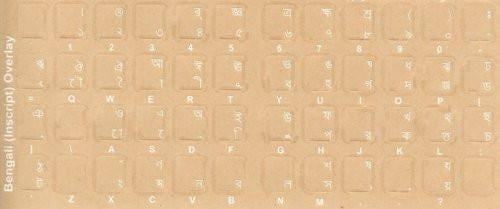

The model's clothes have a warm color cast. As you can notice, the water has a brownish tint.

#Bengali keyboard how to
It’s a matter of taste whether you want those extra hues to creep into your image, but it’s important to know how to make it happen. Now we’re not necessarily seeing a big change in our already saturated fruit, but we’re pulling in some blues from the background that make for an interesting complementary color scheme. On the far right, I’ve also increased the vibrance. In the middle, we’ve upped the saturation and you can see a pretty steady boost in color throughout the photo. If you have an image where one color is stealing the show, “Vibrance” can even the playing field. It will (theoretically) leave the already saturated portions of your image mostly alone, intensifying the flatter color ranges and helping them keep up, in a sense. “Vibrance,” on the other hand, only affects certain color ranges depending on your image.

It will intensify all of the color in your shot at a uniform rate. Saturation is your all-purpose fix for flat colors in your photo. Next, you’ll see four more sliders: “Highlights,” “Shadows,” “Whites,” and “Blacks.” The question most beginners have at this point is, “ What’s the difference between highlights and whites or shadows and blacks?” We’ll talk about that next.Īt first glance, these two sliders may seem like they do the same thing (and in some images, they might.) Think of it as the difference between your “Contrast” slider and one of the more specific sliders like “Whites” or “Blacks,” except here we’re talking about color and not value. Now we see some nice definition in our tonal range, which really works for this image. You can see that some of those same brighter areas have been lightened up while the darker areas have been further darkened or left untouched. On the right is the same image, but instead of increasing exposure I bumped up the “Contrast” slider. “Exposure” is a double-sided coin: it does a great job of illuminating, but it really shines in a situation where your image is uniformly underexposed. Everything is bright and cheery, but we’re also noticing less detail in the bowl of sugar and on the cream. To the left, you see an image with the exposure bumped up. This one-size-fits-all approach may not be right for every project. As with “Exposure,” you’ll want to stick to subtle changes here. “Contrast” will brighten your brights and darken your darks quickly for you. This is another slider that will affect your entire image at one time. Things get wild, fast! If you need to backpedal, remember that you can always use Command + Z to go back a step. You can get creative if you like, and add an intentional color cast by clicking in an area with a touch of color to it, Be careful and watch out for the more saturated colors. This will adjust the white balance of your image based on that neutral spot. Look for a perfectly neutral area in your image and click on it. It’s zooming way in on those pixels and telling you to pick a target neutral. Click on it to select your eyedropper and hover it over different points in your image.Īs you hover, you’ll see a box like the one above. Notice that little tool on your top left there. We’ll cover this again in my upcoming tutorial for advanced users, but let’s also go over some things while we’re here. Just remember that your white balance sliders can still affect your image if you select “Black & White”! This is a quick way to switch from color to black and white. The first thing you’ll see under the Basic panel is the option to choose your treatment.


 0 kommentar(er)
0 kommentar(er)
